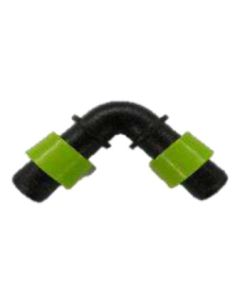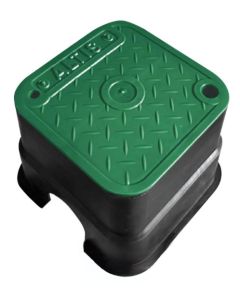-
 Altis 90 Degree Joiner
Altis 90 Degree JoinerAltis Reticulation Fitting
The Altis 90-Degree Joiner is designed to suit Altis reticulation systems in termite management installations. This versatile 90-degree shaped provides a flexible trajectory for the dripper line to circulate around bay windows and other installation requirements. Its superior design includes sealing slip lock joints which offer a secure and easy-to-use fitting.
-
 Altis Square Lockable Pathway Traps
Altis Square Lockable Pathway TrapsAltis Reticulation Fitting
The Altis Square Pathway Trap is a pump-up fitting that allows the manifold pump to be concealed. This is a lockable trap and is the recommended pathway trap for use with Altis reticulation systems. It comes supplied with 2 screws and requires an Allen key to tighten.
-
 Altis T-Joint
Altis T-JointAltis Reticulation Fitting
The Altis T-Joint is a dripper line fitting for the Altis termite reticulation system. It is a suitable fitting to link the dripper line into penetrations and can be used to go around external pipes and penetrations. No additional clips are required as the blue slip lock joints provide the necessary seal.
-
 Altis 45 Degree / 135 Degree Joint
Altis 45 Degree / 135 Degree JointAltis Reticulation Fitting
The Altis 45 degree / 135 degree joint is a dripper line fitting suitable for routing the dripper line around bay windows. No clips are required as the slip lock joints provide the necessary seal required by the termite reticulation system.
-
 Altis Inline Joint with Locking Rings
Altis Inline Joint with Locking RingsAltis Reticulation Fitting
The Altis Inline Joint is a dripper line fitting used to join two pieces of dripper line together in the Altis termite reticulation system. No clips are required as the blue slip lock joints provide the necessary seal.
-
 Altis Stop End with Locking Rings
Altis Stop End with Locking RingsAltis Reticulation Fitting
The Altis Stop-End is a dripper line fitting used to on the dripper line at the end of a run of the Altis termite reticulation system. No clips are required as the blue slip lock joints provide the necessary seal.
-
 Multi Facet Donger Termite Inspection Tool
Multi Facet Donger Termite Inspection ToolFixed length
The Multi Facet Donger (MFD) is a tool used in termite and building inspections and produces a change in tone when damage or anomalies are present. This donger has been designed to reduce the risk of missing timber damage by providing greater surface contact and covering substantially more surface area than conventional tools.
-
 Multi Facet Donger with Telescopic Shaft Termite Inspection Tool
Multi Facet Donger with Telescopic Shaft Termite Inspection ToolExtendable telescopic shaft
The Telescopic Multi Facet Donger has a lightweight carbon fibre telescopic shaft, a removable head and an integrated timber hardness tester.
-
 Slab and Soil Injector Body with Bent Top
Slab and Soil Injector Body with Bent TopBent Top
The Slab and Soil Injector Body is a stainless steel frame only and features a bent top. It is designed for use with a range of slab and soil injection extensions. No tips are included.
-
 Slab and Soil Injector Body with Straight Top
Slab and Soil Injector Body with Straight TopStraight Top
The Slab and Soil Injector Body is a stainless steel frame only and features a straight top. It is designed for use with a range of slab and soil injection extensions. No tips are included.
-
 Slab Injector Sealing Cork (Polythene)
Slab Injector Sealing Cork (Polythene)The Slab Injector Sealing Corks are premium polythene corks designed to provide a tight and secure seal for holes drilled in concrete during termiticide application. These corks ensure efficient and effective sealing, making your termiticide slab injection job smooth, professional and reliable.
-
 Termidor High Pressure Device
Termidor High Pressure DeviceOnly for use with Termidor HE
Maximise your termite protection with the cutting-edge Termidor High Pressure Device (HPD). The Termidor High Pressure Device is specifically designed to be used for applications of Termidor HE by allowing for hole spacings of up to 600mm, ensuring the same unparalleled coverage with fewer drill points.
Developed in collaboration with BASF, the Termidor High Pressure Device operates at a minimum pressure of 800psi, harnessing the power of Termidor HE's patented Advanced Polymer Technology™. This synergy between Termidor HE and the high-pressure device offers pest control professionals a revolutionary way to apply termite treatments, reducing the number of holes needed and minimising disruption to structures.
Feral Animal Control
Shop By
